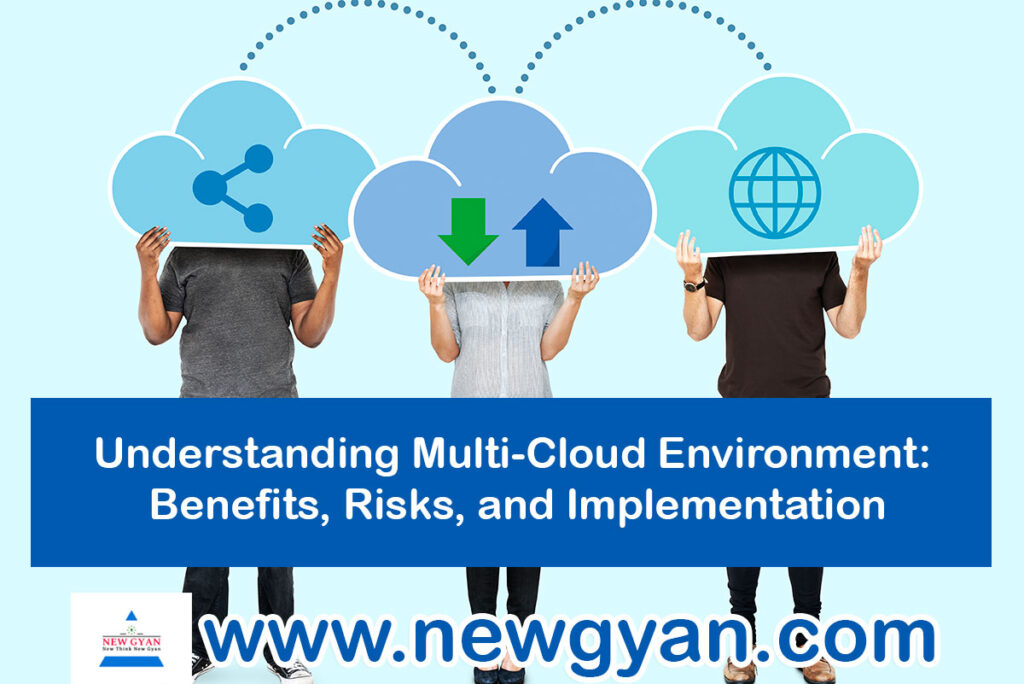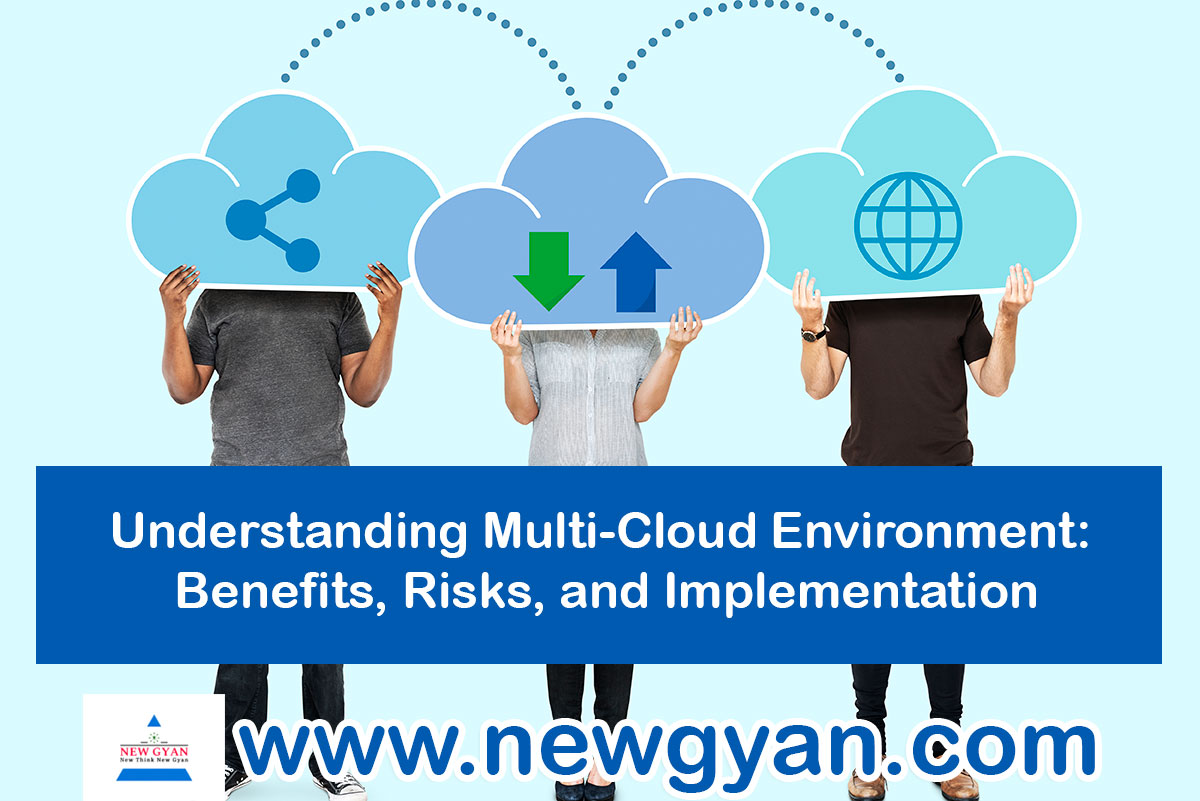In today’s digital world, cloud computing has become an integral part of businesses of all sizes. Cloud services enable organizations to access, store, and manage their data and applications on remote servers instead of on-premises infrastructure. Cloud computing offers numerous benefits, such as cost savings, scalability, flexibility, and improved collaboration.
However, businesses face challenges in choosing the right cloud provider and managing their cloud resources. One solution to overcome these challenges is multi-cloud environment. But what is multi-cloud environment, and how does it work?
In this article, we will dive deep into the concept of multi-cloud environment, its benefits and risks, and how to implement it in your organization.
What is Multi-Cloud Environment?

Multi-cloud environment is an approach to cloud computing that involves using multiple cloud providers to host different applications and workloads. In a multi-cloud environment, organizations can leverage the strengths of different cloud providers and avoid vendor lock-in.
Multi-cloud environment can include a combination of private, public, and hybrid clouds. Private cloud refers to cloud infrastructure that is dedicated to a single organization, while public cloud is shared infrastructure that is accessible to multiple organizations. Hybrid cloud combines both public and private clouds, allowing organizations to balance their workload across different environments.
Benefits of Multi-Cloud Environment
Using multi-cloud environment can offer numerous benefits to organizations, including:
Avoid Vendor Lock-In
One of the most significant benefits of using multi-cloud environment is that it allows organizations to avoid vendor lock-in. Vendor lock-in occurs when a business relies on a single cloud provider for all its cloud services. This can create challenges, such as difficulty in migrating data and applications to another cloud provider, and dependence on a single provider’s pricing and service quality.
With multi-cloud environment, organizations can spread their workloads across multiple cloud providers, reducing the risk of vendor lock-in. This can also provide organizations with the flexibility to choose the right cloud provider for each workload.
Improved Performance
Another benefit of multi-cloud environment is improved performance. Different cloud providers have different strengths and weaknesses in terms of performance, availability, and pricing. By leveraging multiple cloud providers, organizations can select the best cloud provider for each workload, resulting in improved performance and reduced downtime.
Cost Savings
Multi-cloud environment can also lead to cost savings. By leveraging multiple cloud providers, organizations can take advantage of the most cost-effective cloud services for each workload.
This can also provide organizations with the flexibility to switch to a more cost-effective cloud provider as their needs change.
Increased Resilience and Reliability
Multi-cloud environment can also increase resilience and reliability. By spreading their workloads across multiple cloud providers, organizations can avoid a single point of failure. This can reduce the risk of downtime and data loss, providing increased reliability and resilience.
Risks of Multi-Cloud Environment
While using multi-cloud environment can offer numerous benefits, it also comes with certain risks, including:
Complexity
Using multi-cloud environment can increase the complexity of managing cloud resources. This can include challenges in monitoring and managing different cloud providers, and ensuring compatibility between different cloud services. Organizations may need to invest in additional tools and resources to manage their multi-cloud environment effectively.
Security
Using multi cloud environment can also increase security risks. Different cloud providers may have different security measures and protocols, and ensuring consistent security across multiple cloud providers can be challenging. Organizations may need to invest in additional security measures to ensure the security of their multi cloud environment.
Cost
While multi cloud environment can lead to cost savings, it can also increase costs. Managing multiple cloud
providers and ensuring compatibility between different cloud services can require additional resources and expertise. Organizations may also need to invest in additional tools and services to manage their multi cloud environment effectively, which can increase costs.
Implementing Multi Cloud Environment
Multi-Cloud Environment: Implementing multi-cloud environment requires careful planning and execution. Here are some steps organizations can take to implement multi-cloud environment successfully:
Assess Your Needs and Goals
Before implementing multi-cloud environment, organizations need to assess their needs and goals. This includes identifying the workloads and applications that would benefit from multi-cloud environment, as well as determining the right combination of cloud providers to meet their needs.
Choose the Right Cloud Providers
Choosing the right cloud providers is crucial for a successful multi-cloud environment. Organizations need to evaluate cloud providers based on their performance, reliability, security, and pricing. They should also consider the compatibility of different cloud services and the ease of integration.
Plan and Implement a Multi-Cloud Strategy
Organizations need to plan and implement a multi-cloud strategy that outlines how they will manage their multi-cloud environment. This includes determining the roles and responsibilities of different teams, establishing governance and security policies, and identifying the tools and resources needed to manage their multi-cloud environment effectively.
Monitor and Optimize Your Multi-Cloud Environment
Once implemented, organizations need to monitor and optimize their multi-cloud environment regularly. This includes monitoring the performance and availability of different cloud services, identifying and addressing security vulnerabilities, and optimizing the use of different cloud services to ensure cost-effectiveness.
FAQs
Answer: Multi-cloud environment refers to the use of multiple cloud providers to host different applications and workloads. Hybrid cloud refers to the use of both public and private clouds to host different applications and workloads. While both approaches involve using multiple cloud environments, multi cloud environment can include a combination of private, public, and hybrid clouds.
Answer: Using multi cloud environment can increase security risks if not managed effectively. Different cloud providers may have different security measures and protocols, and ensuring consistent security across multiple cloud providers can be challenging. Organizations may need to invest in additional security measures to ensure the security of their multi-cloud environment.
Answer: Organizations can ensure compatibility between different cloud providers in multi cloud environment by selecting cloud providers that offer compatible services and APIs. They can also use middleware and integration tools to facilitate communication and data exchange between different cloud services.Multi-Cloud Environment
Conclusion
Multi-cloud environment offers numerous benefits, including avoiding vendor lock-in, improved performance, cost savings, and increased resilience and reliability. However, it also comes with certain risks, such as complexity, security, and cost. By following best practices for implementing and managing multi-cloud environment, organizations can leverage the strengths of different cloud providers and achieve their cloud computing goals effectively.
- Hybrid Vs Multi-Cloud: Which is the Better Cloud Computing Strategy in 2023?
- How Many Types of Data Cloud Management Systems 2023 in US
- Navigating the Cloud: A Guide to Choosing the Right Cloud-Based Hosting Provider
- How to find the Cheapest Online Associate Degree in Accounting 2023
- A Guide to Cheapest Associate Degree Programs 2023

